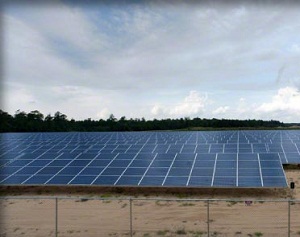Draker introducing large-scale PV monitoring to Japan
 Vermont-based Draker Laboratories partnered with Tokyo-based EKO Instruments to bring commercial- and utility-scale PV monitoring to Japan. The partnership comes as Japan prepares to unleash its feed-in tariff this July.
Vermont-based Draker Laboratories partnered with Tokyo-based EKO Instruments to bring commercial- and utility-scale PV monitoring to Japan. The partnership comes as Japan prepares to unleash its feed-in tariff this July.
It will also give the company an ideal way to access the Asian solar market.
Japan decided last year to move away from nuclear power following the devastating tsunami and the failures at the Fukushima nuclear power plant. As such it will introduce a new feed-in tariff this year to encourage more wide-spread adoption of PV throughout the country.
“The Japanese market is starting to grab more attention with the feed-in tariff starting in July,” said Draker CEO Chach Curtis. The company will likely be among the first to offer utility-scale PV monitoring in Japan.
Draker offers a three-piece monitoring solution, according to Curtis. It includes in-field data-acquisition hardware, meteorological sensor, data loggers, energy meters and more installed onsite. Then the other components are the web interface and the field service.
The feed-in tariff will change how solar is developed in Japan.
“The new feed-in tariff coming on in July is aimed utility-scale projects. We hadn’t targeted it earlier because it had not lined up to grow the market,” Curtis said. “That market has been focused on small residential markets. We focus on large commercial scale monitoring.”
Residential systems require relatively simple monitoring systems to determine how they’re working.
“Monitoring the large 10- to 20-megawatt power plants is very different than monitoring the residential 2 to 3 kilowatt sites. There are very basic energy dashboards available now to the residential customer in Japan. There is not a clear offering for the utility-scale projects that we target,” Curtis said.
To meet the local needs, Draker will work with EKO to translate its website and tool offerings into Japanese, according to Curtis.
“Once we’ve done it in Japanese, we can do it in other languages well,” he said.
The partnership also positions the company to offer its services in other Asian countries like China, Vietnam and South Korea.
“All of those markets are staring to gather momentum and move as well,” Curtis said.
Such countries are starting to offer incentives that make solar projects more attractive.



